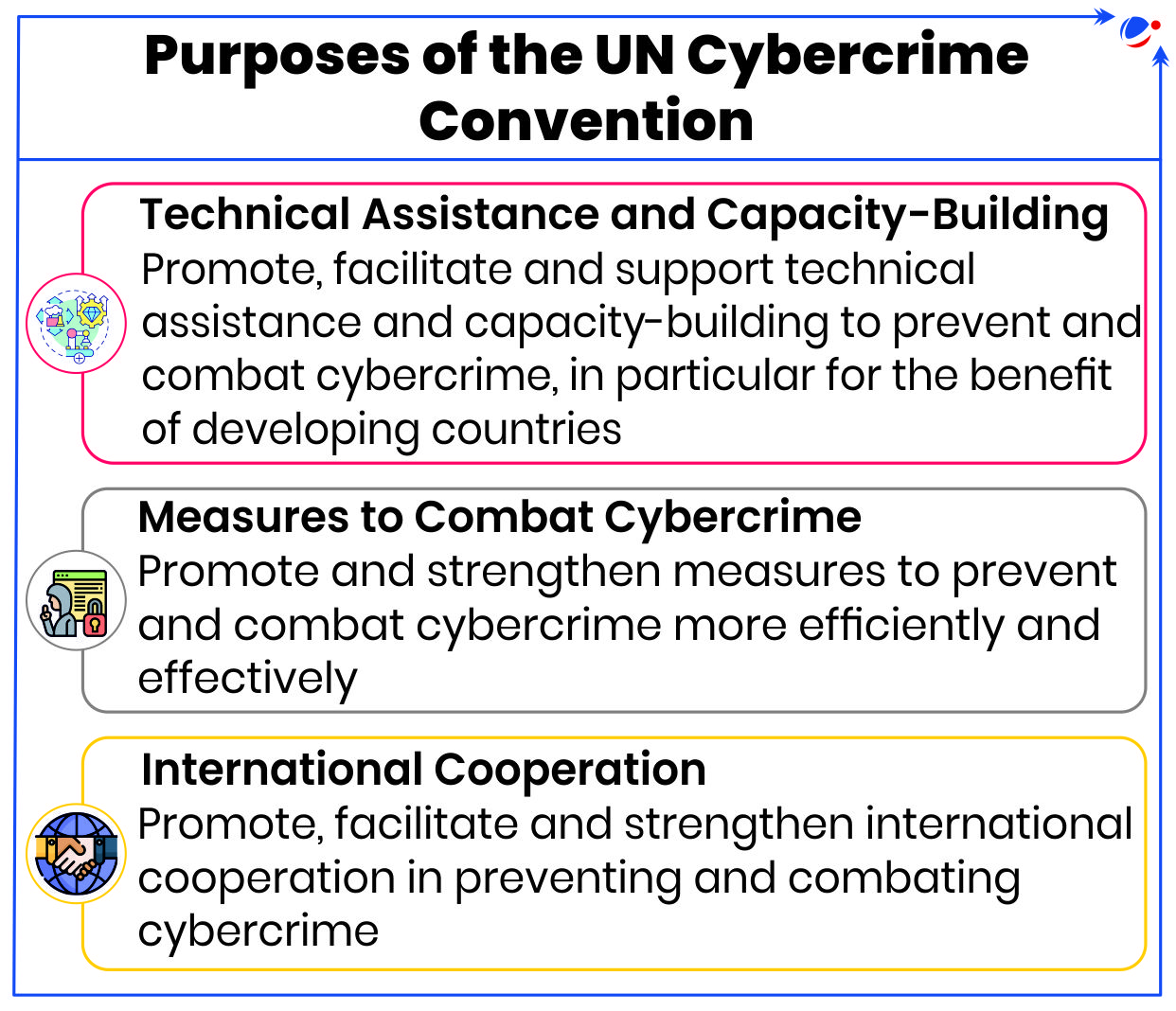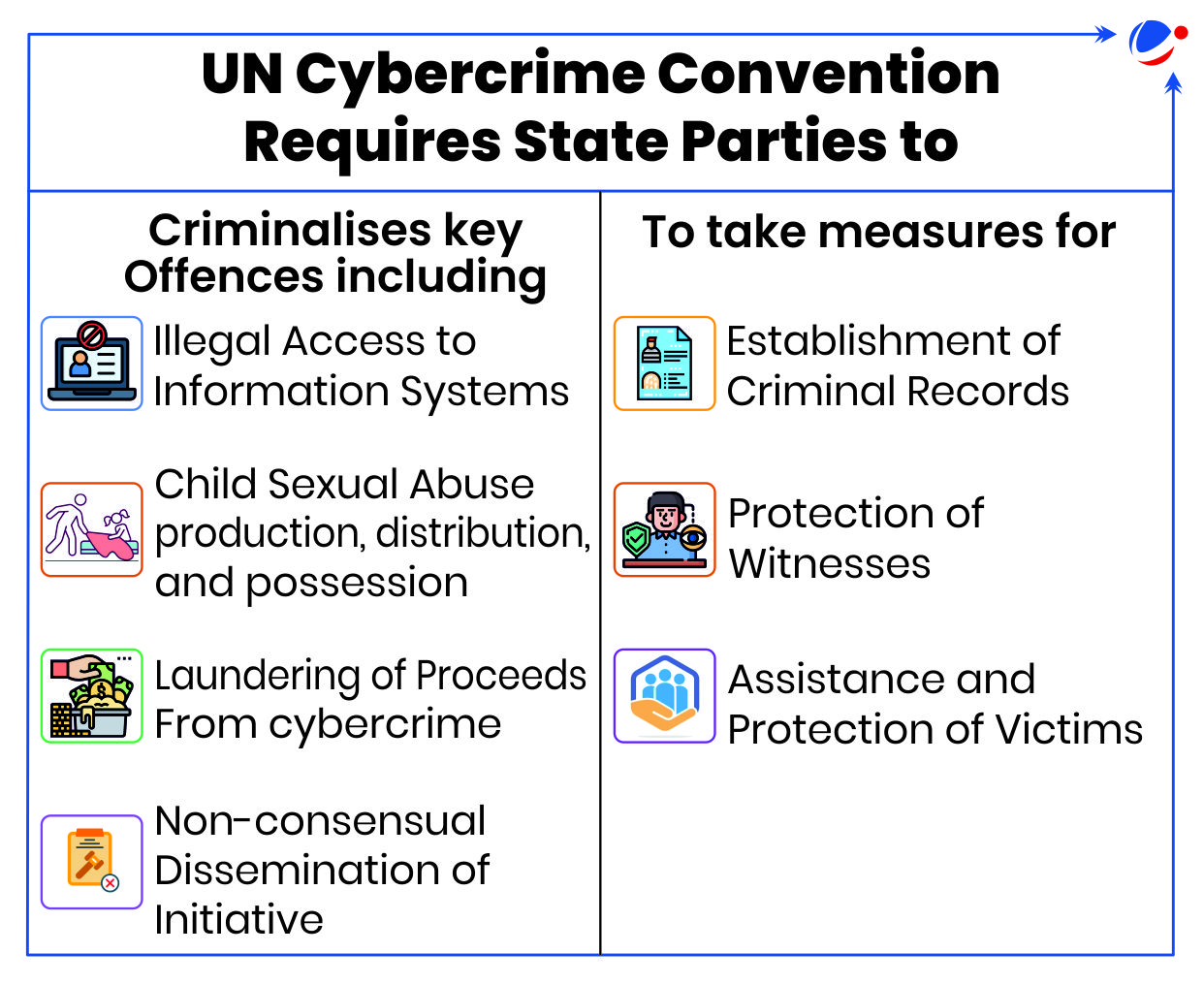Why in the News?
Recently, UN General Assembly adopted landmark United Nations Convention on Cybercrime.

More on the News
- It is the first legally binding UN instrument on cybercrime.
- The convention has been adopted by 193 UN Member States by consensus.
- The convention will open for signature in Hanoi, Vietnam in 2025, with the United Nations Office on Drugs and Crime (UNODC) serving as secretariat.
- It will take effect after 40 states become parties to the agreement.
- Scope of Application
- Focuses on preventing, investigating, and prosecuting cybercrimes, including freezing, confiscating and returning crime proceeds.
- Involves collecting and sharing electronic evidence for criminal investigations.

Key Provisions of the Convention
- International Cooperation & Data Sharing: It includes mutual legal assistance, extradition and establishment of a 24/7 network for immediate assistance, cooperation for the purpose of confiscation etc.
- Procedural Measures: Sets guidelines for law enforcement, including preserving, searching, and seizing electronic data.
- Protection of personal data: Data transfer must comply with applicable domestic privacy laws and include safeguards. Also, convention encourages bilateral or multilateral agreements to ease data sharing.
- Protection of Human Rights: It ensures human rights and freedoms are upheld during implementation.
- Other provisions: Provisions for extradition, Transfer of sentenced persons, Transfer of criminal proceedings, Joint investigations.
Why the Convention against Cybercrime matters?
- Increased Connectivity and associated Vulnerability: With over 67% of the global population now online (World Bank), cybercrime risks are widespread.
- Southeast Asia has emerged as a "ground zero" for organized cybercrime, with sophisticated operations threatening economies and infrastructure.
- The threat is escalating, undermining economies, disrupting critical infrastructure, and eroding trust in digital systems.
- Around-the-Clock Cooperation: Transnational crime investigations rely on electronic evidence, which is often decentralized and spread across jurisdictions.
- Quick access is crucial to prevent tampering or deletion. The Convention establishes frameworks for accessing and sharing electronic evidence to support investigations and prosecutions.
- Transnational Nature of Cybercrime: Cybercrimes often involves cross- border transactions and targeting wherein criminals operate from one country while targeting victims in another.
- Thus, handling transnational and organised crimes requires a coordinated global law enforcement response to dismantle their networks and prevent the spread of their activities.
- Adapting to Rapid Technological Advancements: Technologies like AI and 3D printing pose dual-use risks, outpacing policymakers' ability to adapt (UNIDIR).
- Example: While the 1880s electric grid took 50 years to reach 100 million homes, ChatGPT achieved this in just two months (2022).
- Protecting children: Online platforms such as social media, chat apps and games offer anonymity that predators can exploit to groom, manipulate, or harm children.
- By criminalising these offenses, the Convention equips governments with stronger tools to protect children and bring perpetrators to justice.
- Rehabilitation and Justice for Victims: Treaty acknowledges the growing number of cybercrime victims and emphasizes securing justice while addressing the needs of vulnerable individuals in prevention and response measures.
Conclusion
As UNGA adopts the first international criminal justice treaty in over 20 years, it demonstrates success of multilateralism during difficult times and reflects the collective will of member states to promote international cooperation to prevent and combat cybercrime.



